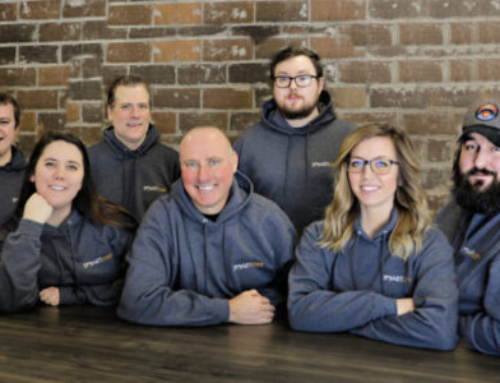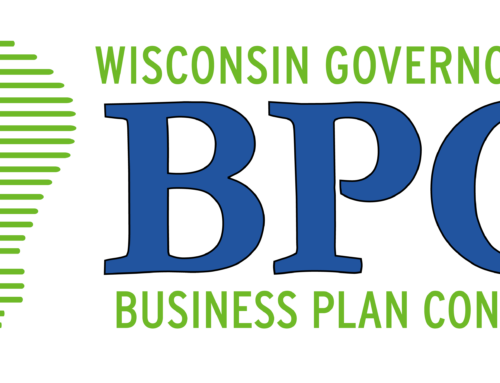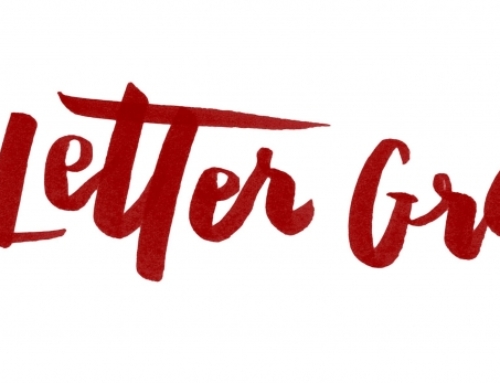If you ask Amelia Baxter, co-founder of Madison-based WholeTrees Architecture & Structures (WholeTrees), her biggest advice for fellow entrepreneurs – “You need to have endurance.” This proved to be an important personal trait in getting her eco-conscious company up and running. WholeTrees engineers cost-efficient, sustainable structural systems for commercial and residential buildings. The company uses a byproduct of sustainably managed forests – small diameter round-timber – a concept co-founder Roald Gundersen had been using for about 20 years before founding WholeTrees with Baxter in 2007.
Today, the company works with innovative owners and building professionals to construct commercial buildings, such as retail, office and institutional space. WholeTrees also has a team of sales channel partners that are helping them expand nationally. Like many startups, the company experienced a few ups and downs along the way, including the 2008 recession. But, much like its structural product, WholeTrees has remained strong and steady through it all. Below Baxter discusses some of the joys and challenges of starting a business. For more information on WholeTrees, please visit: http://wholetrees.com/.
Q: What is your background?
My background is in sustainable land management and when I met my co-founder, Roald Gundersen, I was really focused on agriculture. At that time, I was largely concentrated on what it would take to create the markets to change agricultural production – mostly around food. I worked regionally in the Chicago area around food, farms, and markets. I was impassioned by the sense that an ethical business model would pay for the healthy management of land, so the organic food and fair trade coffee movements fascinated me. Also, I was beginning to look at trees as an undervalued resource, and looking at new, higher value markets for managed forests was a natural progression for me.
Q: Where did the idea for WholeTrees come from?
In 2007, Roald Gunderson and I looked at how we could expand the centers of value Roald had created in his ecological building business and use unmilled round-timber in more unique ways. Roald already had some intellectual property around the use of small diameter timber for structures. It was clear to me that we had the assets to start receiving federal grants, and we were already acquiring an increased client load.
Q: What resources did you use to get WholeTrees off the ground?
We used a few different forms of capital initially. We invested some personal capital and attained early operational capital from client contracts and federal grants. We qualified to receive USDA federal funding in the form of the Value-Added Producer Grant. The grant was a real boost for our company early on. It enabled us to think through a new business model, and by 2011 we started looking for equity investment dollars. We were very fortunate to survive 2008 when the recession hit. If it wasn’t for the diversified early stage funding, I don’t think we would have been able to survive the recession.
We also relied on assistance from the Small Business Development Centers located regionally throughout the state, as well as the Wisconsin Entrepreneurs’ Network (now known as the Center for Technology Commercialization). As we grew, and every time I realized we needed a new building block, I would get the resources I needed from these organizations. These groups were always there to assist, and helped me learn everything from pitching angel investors to writing effective grant applications.
Q: What would you tell other entrepreneurs about the challenges of starting a business?
You need to have endurance. Every entrepreneur would say there are highs and lows when starting a business and those can be very exciting. If you’re in a low, you want to get to your next high point, and when you’re in a high point, you’re inevitably going to fall into a low. But the real strength of a new business is just enduring and moving through these ups and downs. It’s important to use some form of detached wisdom even when things seem less exciting or more challenging.
Q: What would you tell other entrepreneurs about the joys of starting a business?
The biggest joy for Roald and me is that we are motivated by matching our ethics to our life choices. We see this as a vocation and even in the hardest times we feel very pleased that what we believe internally is matched by our daily activities. And you can’t necessarily do that when you have to work for someone else – you’re lucky if you can. When you start your own company, envision it and build it, it’s a tremendous joy to be able to create your own code of ethics and meet the world the way you feel it needs to be met on a daily basis.
Another joy I have is meeting innovative, passionate, intelligent and quick-minded individuals through entrepreneurial and business activities. I get to network with a wonderful group of business professionals.
Q: How does your product differ from your competitors’?
Round unmilled timber is very strong; it’s about 50 percent stronger than milled timber and as strong as steel in tension. It can span long distances and create a very wide space in a building and can also hold up a lot of weight. Our competitors develop materials that also can span long distances and hold a lot of weight: steel and some engineered wood products. But what our company is bringing to the market is a whole new way to engineer trees. A couple key differences and advantages that unmilled timber offers consumers are:
- We cost just as much as steel and provide an environmentally friendly product. Owners or builders that choose to go “green,” but don’t want to spend more can use our materials.
- Steel requires a great deal of fuel to extract the raw materials, process it and ship it globally – it has very high embodied energy. Our round-timber requires very little fuel to extract, produce and then put into a building. Which means our price point is not dependent on fuel costs. As fuel prices increase over the next 10-20 years, we’ll have a big competitive advantage as we grow.
Q: Why do you think your business model will be successful in the marketplace?
In 2007, Roald and I intuited a very strong shift in the understanding of ourselves and our environment. I think “green” was becoming much richer and deeper. Folks were starting to look at supply chains and how they influence larger ecologies and economies – it was shown in the food movement, and is now being exposed in the building movement. The market looking for the newest, most green opportunities is growing. We’re one of the newest, most green structural building systems available, and that bodes well for us as we grow our niche market.
Q: Who are your key customers and where do you see growth opportunities?
Our customers are innovative owners and building professionals. Most of the time we work with owners who are planning to build (office buildings, retail spaces, schools, etc.) and they introduce us to their general contractors and architects.
We have two big opportunities for market growth: national sales channel partners and corporate rollouts. Currently, we work with a national company that sells building structures and they’re selling our product. We’ll be able to grow our national sales capacity quickly through these types of channels. With corporate rollouts, if we can find the right corporate strategist or architect to select us for the next Caribou Coffee or Whole Foods rollout, for example, that will be a big next step for our company.
Q: Where do you envision your company in 10 years?
We envision that the product we are installing will create and attract a new layer of early adopters nationally in the next two years. Our goal is that it will convince and legitimize our product to a whole new audience, so that by year five we will hopefully have opened another regional production center in a forested area, such as the Pacific Northwest. By year seven, our hope is that the intellectual property (both the patented products themselves as well as production processes that we keep secret) will build the value of the company and will make us attractive to acquirers from the forest products or building products industries.









FOLLOW US